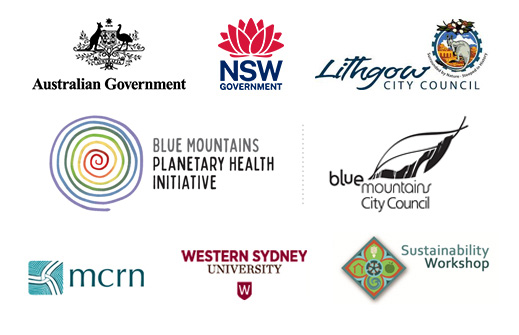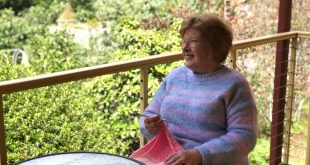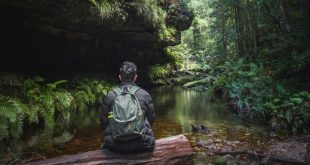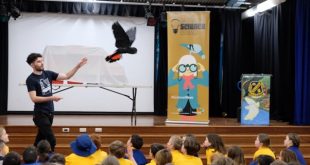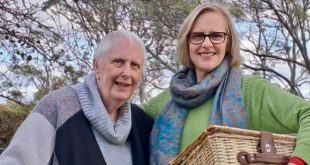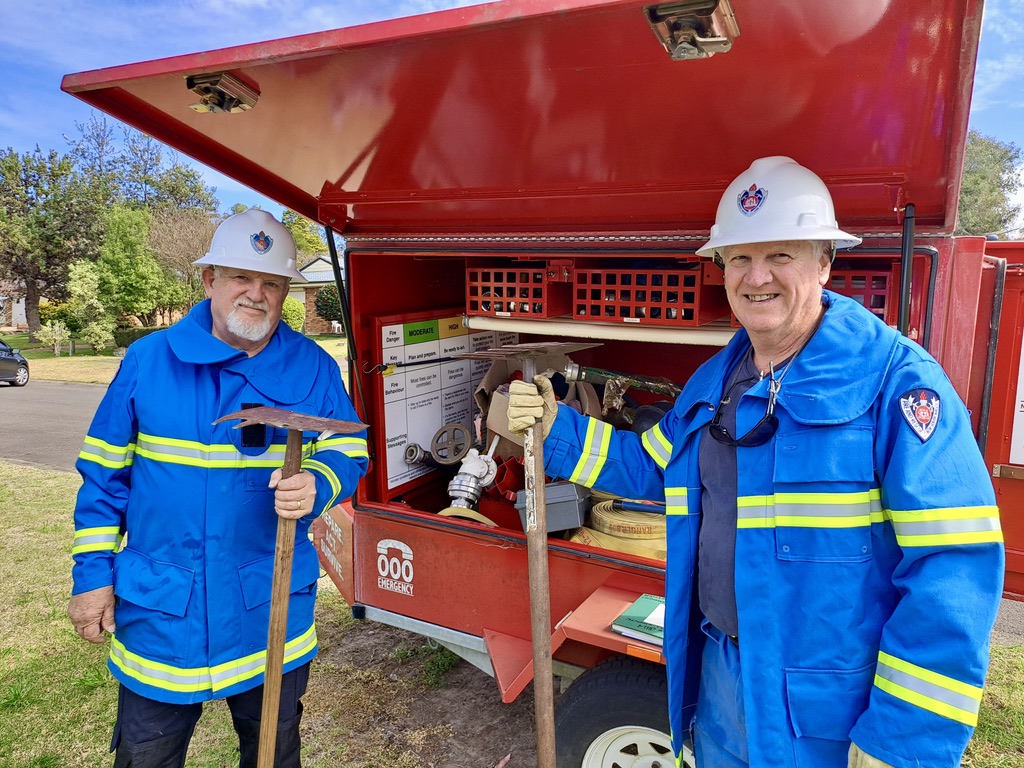
Malcolm Arthur and Michael Robson, volunteer Community Fire Unit members. (Julie Nance)
Story by Julie Nance
The preparation and resilience shown by the Blue Mountains community in the 1994 bushfires helped create Fire and Rescue NSW’s Community Fire Unit (CFU) program. There are now 5,000 CFUs spread throughout NSW – teams of residents preparing and protecting properties in their street. Their support enables emergency services to focus their efforts on the fire front and saving lives. Writer Julie Nance spoke to the head of the Statewide program who grew up in Blaxland, and a dedicated CFU member of 20 years in Winmalee.
Key Points:
- Fire and Rescue NSW Deputy Commissioner Jeremy Fewtrell says: “With the changing climate resulting in longer and more dangerous bushfire seasons, the CFU program is more important than ever to help support Fire and Rescue NSW’s bushfire strategy.” (Source: Introduction to the Community Fire Unit Program eLearning video)
- From the Nepean River to Mount Victoria there are 94 CFUs, boasting 867 volunteer members.
The roar of the fire and the loud explosions are what Michael Robson remembers most clearly about that unforgettable day: 17 October 2013.
The father of four was sheltering inside his home in Semana Place, Winmalee, unaware three houses at the top end of his street were on fire.
This wasn’t Michael’s first experience of a bushfire emergency threatening his property. He’d been here before in 1994 and 2000.
But this time was different. The fear was greater but there was a stronger sense of “I know what to do”. Michael had 10 years of preparation and practice behind him as a coordinator of a Community Fire Unit.
“My wife was a teacher and she was helping walk students from St Thomas Aquinas to safety at the shopping centre,” Michael recalls.
“My daughter was at St Columba’s in lockdown. There’s a lot of emotion that happens and the fact that I had things to do – to prepare and get things ready – probably helped calm me a little bit.”
When it was safe to emerge from his home, Michael and his neighbours – fellow CFU members – got to work, putting out embers.
“There were three homes lost at the top end of the street and they didn’t have a CFU,” Michael says.
“Down here I believe we would have lost more homes if we hadn’t had the CFU. Certainly, the ember attack, we did a fair bit of work.”
View a 60-second video – Community Fire Unit members shows off their equipment (Julie Nance)
A total of 185 homes were lost in Springwood, Winmalee and Yellow Rock in what became known as the ‘Linksview Road fire’.
Superintendent Brendan Hurley is Manager of the CFU program for Fire and Rescue NSW (FRNSW). He echoes what governments are increasingly saying: “We cannot have a fire truck in every street, protecting every house, when we have a major bushfire event.
“Sometimes we struggle to keep up if we have a large breakout day where a number of bushfires start. When resources become stretched, we are very much relying on the local communities and the volunteers.”
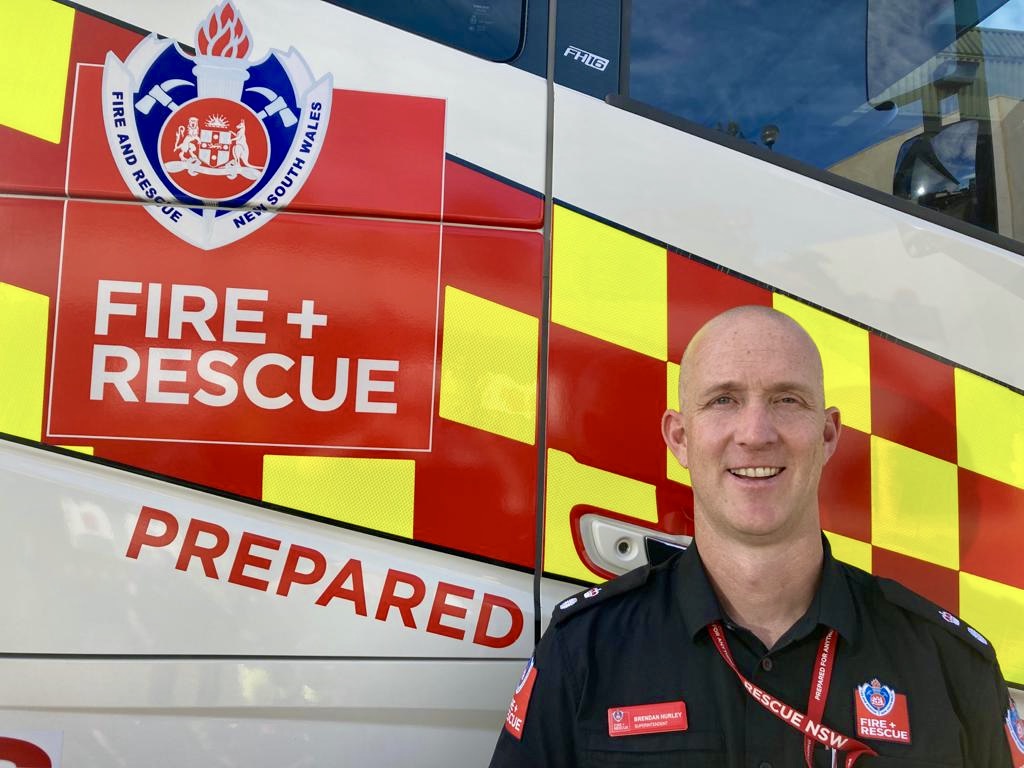
Superintendent Brendan Hurley, Manager of Fire and Rescue NSW’s CFU program. (Photo supplied)
The deployment of the CFUs in 2013 meant firefighting crews could keep moving with the fire front and direct resources to areas that needed protection such as Winmalee High School, where hundreds of students and staff were in lockdown.
FRNSW’s CFU webpage provides a snapshot of the program: “A Community Fire Unit is a team of local residents living in urban areas close to bushland who are supported by Fire and Rescue NSW to enhance their safety and resilience to bushfires. As a volunteer CFU member you will learn how to prepare yourself, your family and your home ahead of the bushfire season. You will learn how to make informed decisions about whether to leave early or stay and defend your property when bushfires threaten.”
The difference between Fire & Rescue NSW CFU volunteers and the Rural Fire Service (RFS) volunteers, is that the RFS volunteer firefighters respond (in fire trucks) to anywhere in the state to undertake bushfire firefighting operations, whereas FRNSW CFU volunteers stay and defend their own properties and communities within a defined area of operations (FRNSW fire district) using assigned resources and equipment contained in trailers or cabinets.
Having grown up in Blaxland, Superintendent Hurley has a strong interest in, and knowledge of the lower Blue Mountains. He began his journey in emergency services as a Rural Fire Service volunteer and enjoyed the camaraderie within the local community.
Superintendent Hurley says although the Blue Mountains community and emergency services were overwhelmed during the 1994 bushfires, it became clear afterwards that a lot of people were well prepared.
He explains: “A number of local residents said ‘we can actually help out a lot more. Once the fire front goes through, we can stay around to help clean up, mop up and put embers out. We can make sure houses are safe once the main fire front goes through and the initial danger is gone’.”
This valuable feedback contributed to the development of the CFU program.
While CFU members have an active part to play in preparing and protecting their neighbourhoods, they are not classed as firefighters.
“Their job is preparing for bushfires and taking a bit of pressure off emergency services,” Superintendent Hurley says. “CFUs free emergency services up to move where the dangers are: life saving or life-threatening situations.”
I’ve often wondered what’s inside the little red CFU trailers dotted around the streets in my lower Mountains neighbourhood.
When Michael lifted the doors of his trailer, parked on a neighbour’s lawn, my first impression was “wow, this little trailer certainly packs a punch with equipment”.
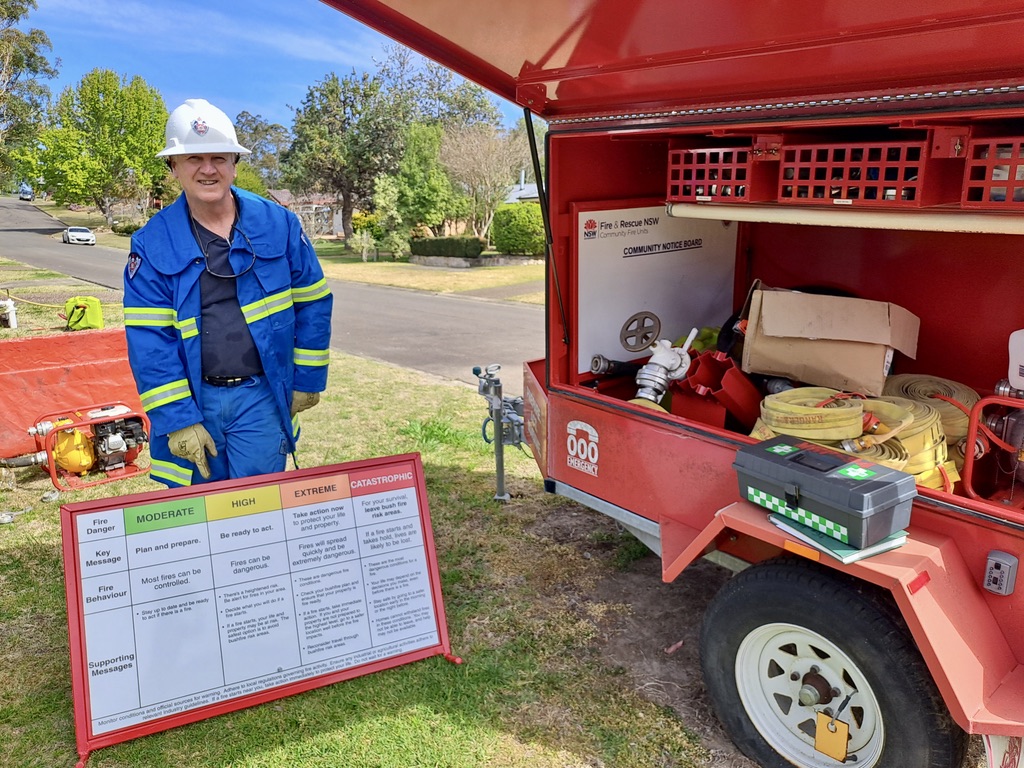
Michael says: “It’s quite amazing the amount of equipment we have, and that provides a level of comfort.” (Julie Nance)
The trailer includes 10 hoses, nozzles, two standpipes and pumps that are checked regularly and can access water from pools in the street. There’s also a small water dam that can be quickly constructed, rakes, walkie talkies and the list goes on!
“The trailer is fantastic,” Michael says. “We’re all trained on the equipment and know what to do and our role. And it’s not to fight fires. It’s just to prepare for fires and mop up afterwards.”
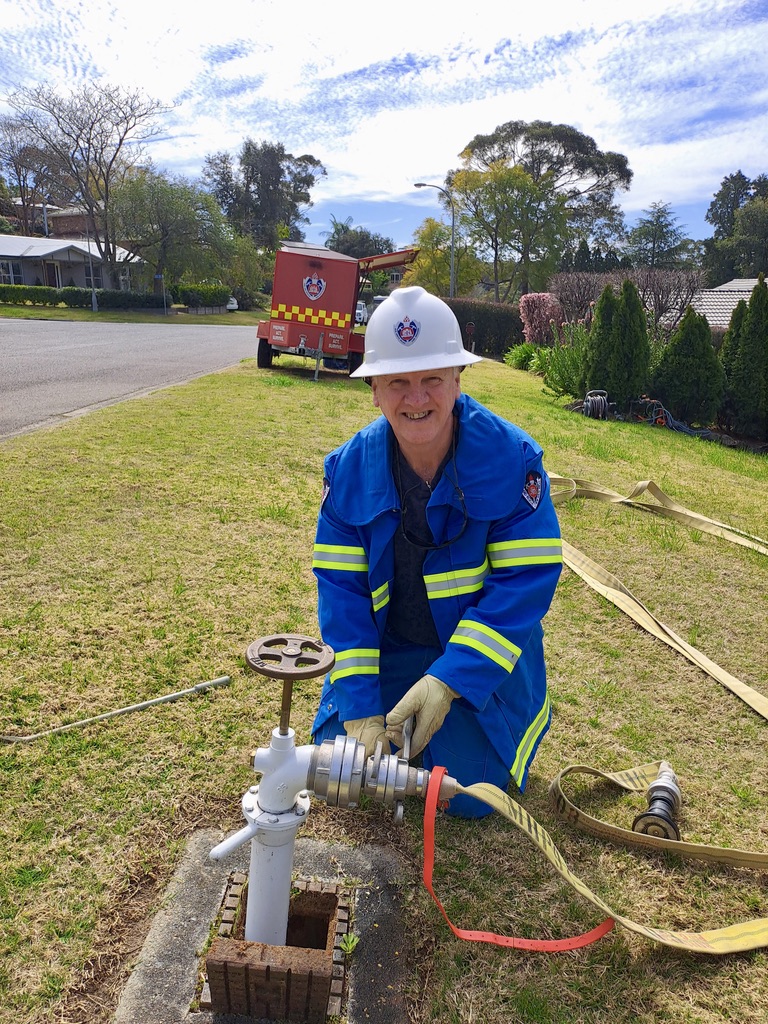
Michael secures a hoseline after fitting the standpipe. (Julie Nance)
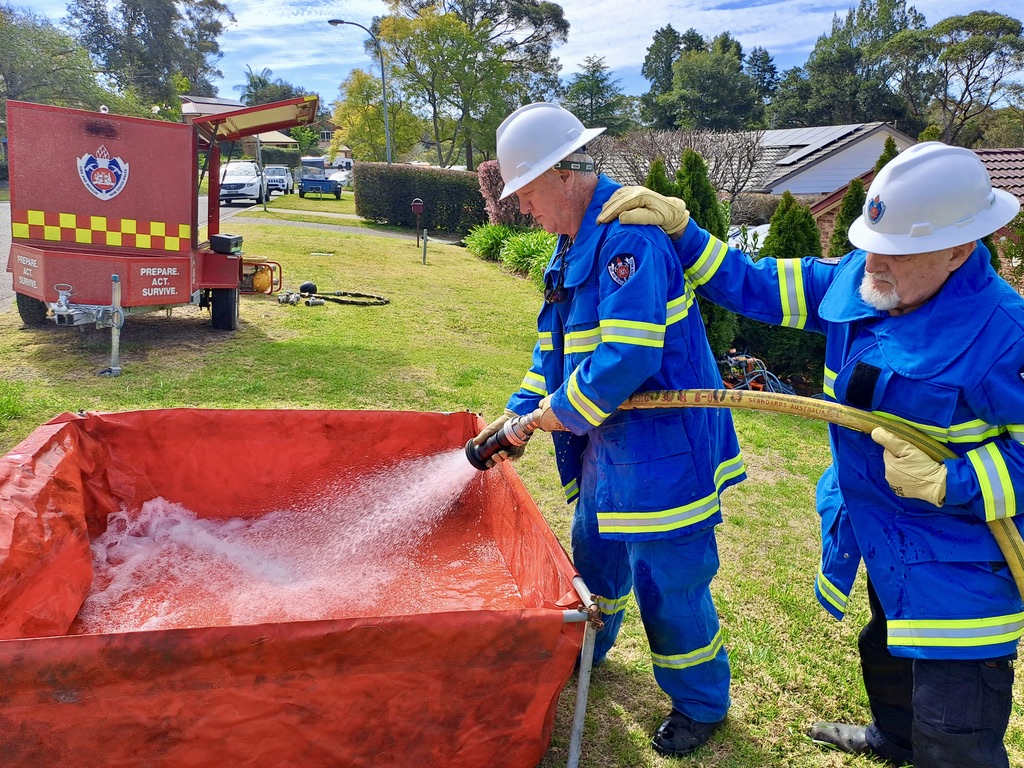
Michael and Malcolm fill the water dam, another water source in addition to 3 pools in neighbouring properties. Malcolm says: “It’s a good feeling knowing we can get things prepared for the firies and help protect our street.” (Julie Nance)
Applications received by FRNSW for the CFU Program are assessed based on a number of factors including distance from bushland and classified level of bushfire risk.
You need a minimum of four members to have a Unit but the preferable number is 10. FRNSW provides the trailer as well as online and practical training and full uniforms.
Michael says his Unit, currently comprising seven members, meets from August to March or April, depending on the fire season. The commitment is one, to one and a half hours, on the first Sunday of the month.
“Working on the backburn trails is the most important element and then checking all the equipment to make sure it’s ready,” he says.
“We have very good guidance and education from Fire and Rescue NSW. If the conditions are rated as catastrophic, we’ve got no choice. We can’t even activate. We have to go.”
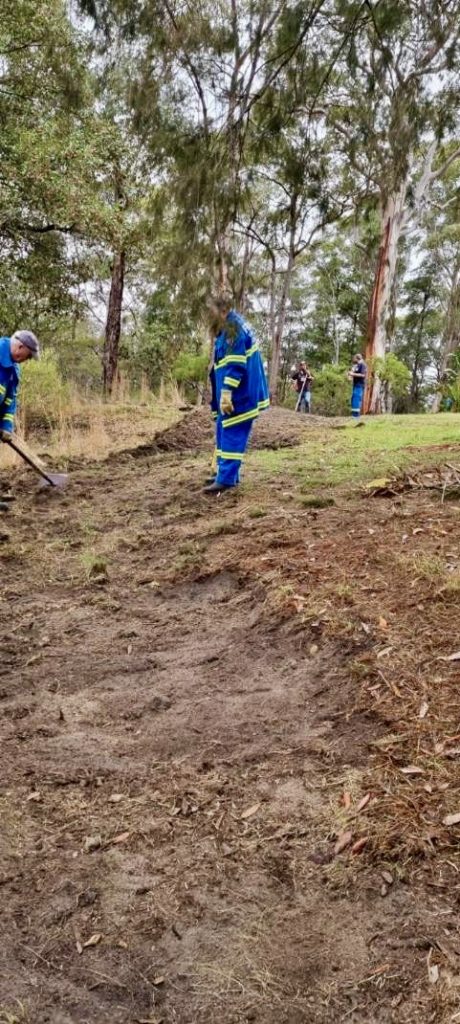
CFU members cutting a backburn trail in case it’s needed by fire services during a wildfire. (Photo supplied)
Superintendent Hurley says there’s a strong element of sharing by CFU members: resilience, information, and preparedness and prevention activities to enable communities to be better prepared for the upcoming bushfire season.
Michael says an unexpected bonus from being involved has been the strengthening of community ties.
“The CFU has been very bonding for our street. We know each other a lot better now,” he says. “You know when people are sick and you can support each other.
“We’re fully prepared for this season and we’ve got our neighbours prepared, even the ones who aren’t in the CFU. They know we’re here and I think it helps just create that community aspect. It has been tremendous.”
Take Action:
- If you are interested in joining a Fire and Rescue NSW CFU, or starting your own Unit, visit the FRNSW website; phone: 1300 238 238, Email: cfu@fire.nsw.gov.au or visit Facebook.
- Learn about Rural Fire Service volunteer and career opportunities including aerial and remote area firefighting here: Life in the Hot Seat and Battling Remote Bush Blazes.
Share this article:
This story has been produced as part of a Bioregional Collaboration for Planetary Health and is supported by the Disaster Risk Reduction Fund (DRRF). The DRRF is jointly funded by the Australian and New South Wales governments.
